QCF: Ghost of Tsushima
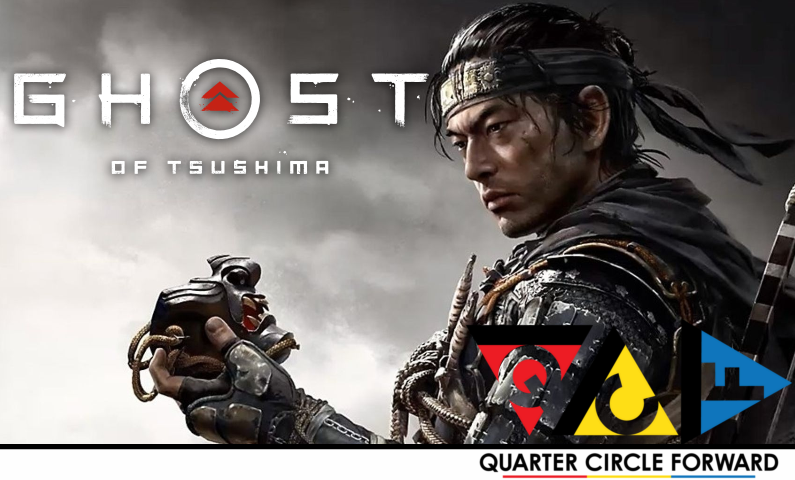
 uring the Feudal era of Japan, the land of the rising sun saw many conflicts, ranging from invading forces to civil unrest within its regions, balancing out into an age of strife and prosperity. To maintain order and peace through the land, the Shogun appointed Samurai, soldiers who adhere to a strict code of honor, to oversee the safety of its people, and protect the sanctity of their laws.
uring the Feudal era of Japan, the land of the rising sun saw many conflicts, ranging from invading forces to civil unrest within its regions, balancing out into an age of strife and prosperity. To maintain order and peace through the land, the Shogun appointed Samurai, soldiers who adhere to a strict code of honor, to oversee the safety of its people, and protect the sanctity of their laws.
But what happens of the sanctity of your honor means nothing to an enemy that threatens everything you hold dear? What do you place your faith in more to uphold your Samurai code?
In the last three generations of PlayStation hardware, the developer Suckerpunch has pumped out some hard hitters in the Stealth and Open-World genres with titles like Sly Cooper and inFamous, but this time, they’re aiming to combine dynamics of both gameplay styles into one unforgettable experience with the Ghost of Tsushima. While there are some valid arguments against a western studio being able to do justice towards delivering an authentic-feeling Samurai tale, the Sony studio spared no expense in ensuring that Ghost of Tsushima conveys the mysticism of the Japanese warrior, in a world that’s beautiful beyond compare, if not a bit too familiar all the same.
It’s one thing to adopt the aesthetic of a Samurai into the world you’re weaving, and entirely different thing to pay tribute to the culture of Japan’s most venerable warrior—Ghost of Tsushima manages to both swimmingly well. The intriguing suspension of fact and fiction is largely attributed to the character development of its protagonist, Jin Sakai, is as he leads a tortured journey that pulls him back and forth between staying true to the path of Bushido, to doing what needs to be done to save his people.
The threat of Mongol invasion led by a Khan setting to escape the legacy of Genghis Khan himself, has ravaged the Samurai who bravely stood at the frontlines of Komoda Beach, through the force of relentless numbers and unconventional tactics of warfare that defy everything the Samurai stand for. With all of the Samurai dead, and his uncle captured, Jin barely survives the battle thanks to the aid of a lone thief who nursed him back to health—granting him a second chance to fight against the Mongol forces, only for him to fail once again.
Standing up from his second defeat, Sakai realizes that taking the fight to these invaders head-on won’t grant him the victory he needs, and where he gradually begins to “give up the ghost” so to speak (heh), as he opts for the silent tactics of assassination. It’s here where we begin to see the change in Jin’s demeanor and the desperate depths of his resolve. There’s a concise approach to pacing to Jin’s transformation through just the right amount of flashbacks and exposition that brilliantly portray a genuine sense of self-loathing over every Tachi knife he plunges into a Mongol’s back. As the plot gradually unfolds though, so too Jin’s embrace of this approach, and the advantages it yields him as a one-man army against a fleet of thousands. The character work here is easily some of the most engrossing writing and direction ever produced by Sucker Punch, and that goes for the supporting cast and antagonists too. The story is just the right twist of fiction, and historical tribute to keep players coming glued to the screen the likes of which could stand toe to toe with the work of Akira Kurosawa.
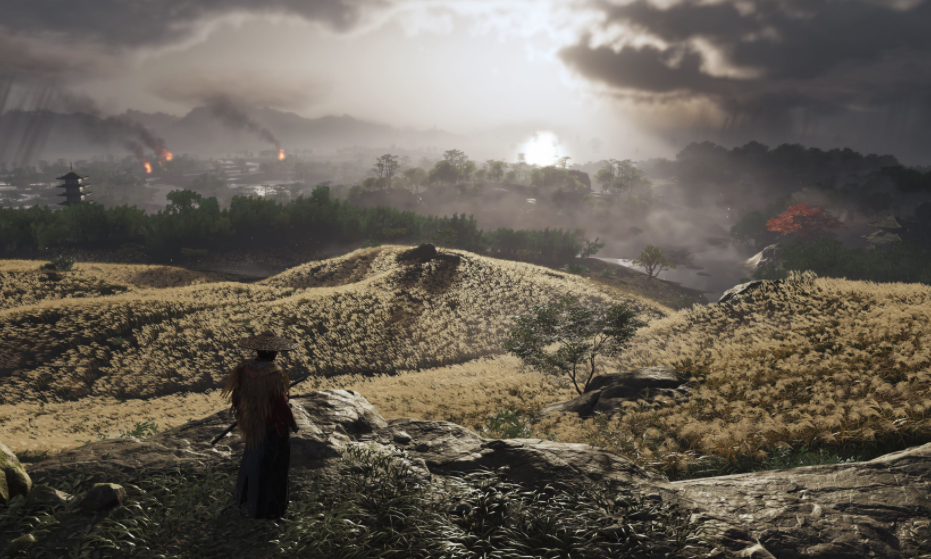
Narrative aside though, a plot like Ghost of Tsuhima’s is only as good as the gameplay and level design that carries it; thankfully, the open-world approach it takes to is an enthralling ride of action that superbly engages the player’s senses of exploration, combat, and survival.
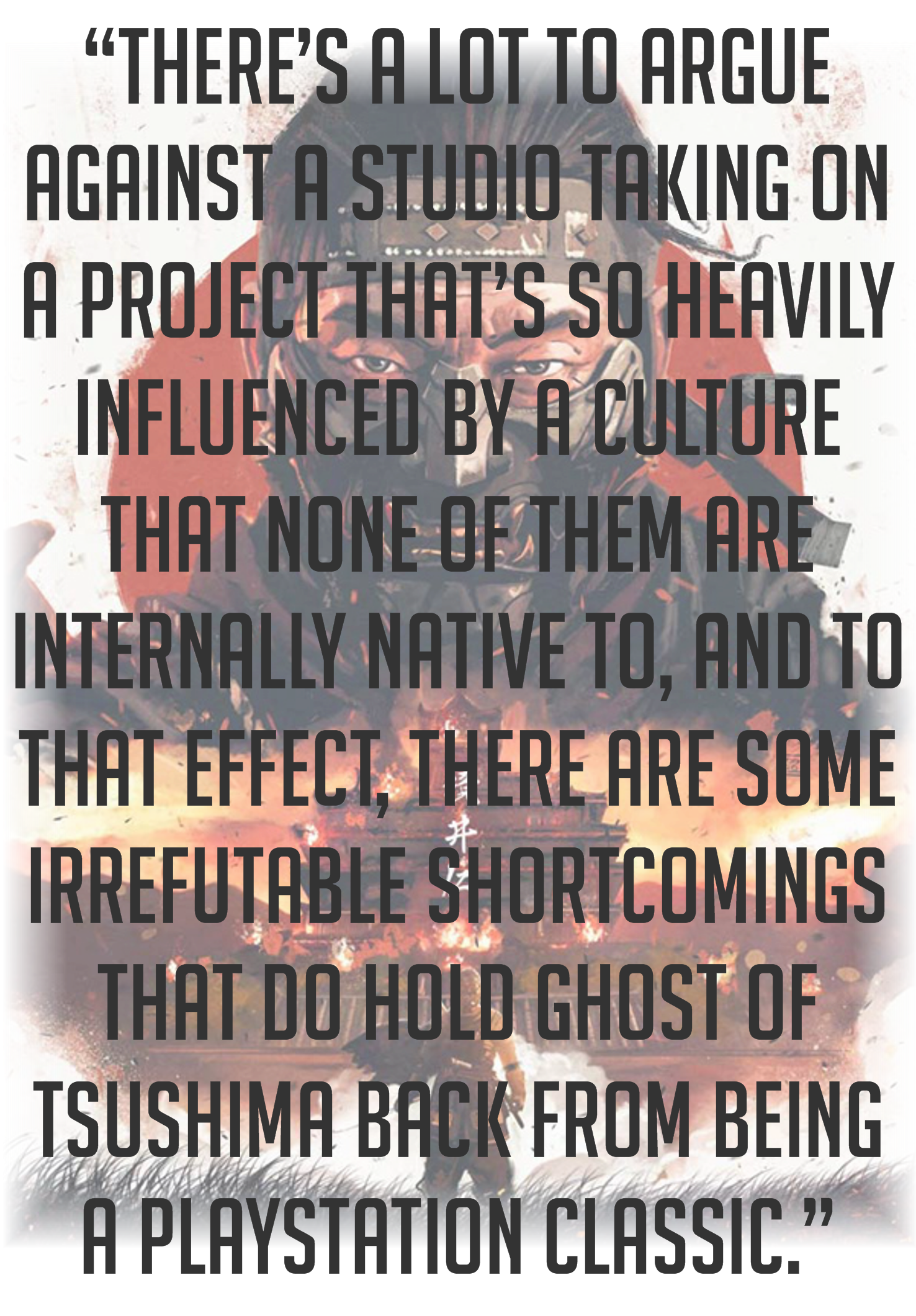 The province of Tsushima depicts the serene farm pastures of woodlands that are ravaged by war, where scenes of the Island’s people being impaled upon pole-arms, hung from trees, burned corpses, or dismembered remains that litter the various torture device erected by the enemy army, is the setting is equal parts beautiful and mortifying. The beauty of GoT’s presentation isn’t all eye-catching spectacle though, as the locales of the island have all been meticulously reproduced by Sucker Punch down to every village, cemetery, shrine, forest, riverbank…they’re all analogs of the real-life location it recreates, with the end-result making for an immersive world that emanates a unique identity that works on multiple levels. In addition to the accuracy of Tsushima’s grounded world design, other subtle flourishes help to navigate the density of its environment that doesn’t “Gamify” the process.
The province of Tsushima depicts the serene farm pastures of woodlands that are ravaged by war, where scenes of the Island’s people being impaled upon pole-arms, hung from trees, burned corpses, or dismembered remains that litter the various torture device erected by the enemy army, is the setting is equal parts beautiful and mortifying. The beauty of GoT’s presentation isn’t all eye-catching spectacle though, as the locales of the island have all been meticulously reproduced by Sucker Punch down to every village, cemetery, shrine, forest, riverbank…they’re all analogs of the real-life location it recreates, with the end-result making for an immersive world that emanates a unique identity that works on multiple levels. In addition to the accuracy of Tsushima’s grounded world design, other subtle flourishes help to navigate the density of its environment that doesn’t “Gamify” the process.
For example, the waypoint system for the Overworld is managed by the flow of wind in terms which direction the breeze blows towards, making the trek for your destination as easy as traveling downwind until reaching the arrival point. In addition to the wind, there are also special birds that will appear above you, and soar towards the same direction in case the wind mechanic isn’t enough to guide by. The little touches add so much to the exploration of Tsushima, as traversal gets to be more natural over time, even so, the Suckerpunch has streamlined the accessibility of travel with one of the most gracious fast travel systems ever implemented in an open-world game.
Every landmark you arrive at, be it a village, side-quest, or curio, becomes an instant access point on the map for fast travel, allowing players to freely warp between points of interest instead of roughing it on foot. What’s even more incredible is just how responsive the mechanic is in terms of load times—they’re near non-existent. In no way do I exaggerate this when I say that players can complete a Fast Travel selection within 5 seconds you can browse the location on the map, select fast travel, transition into a brief load screen, and then reappear there in real-time. The ease of access lends a sense of freedom to the playstyle you want to approach Ghost of Tsushima with, be it slow and steady or fast and heavy—either pace will service the experience to the same effect.
Travel is only one half of the open-world adventure, with combat being the other, and what’s a Samurai game without some solid swordplay mechanics to keep the blood spilling? The SP Team really outdid themselves with a style system that adds an extra layer of strategy to the typical mob classes encountered in an action-adventure game. The enemy types are defined by the weaponry, each with their strengths and weaknesses that can be used against the four Sword Stances that Jin masters through the course of the adventure. Utilizing a rock-paper-style system, players will have to nimbly cycle through each Stance on the fly in order to skillfully deal with the various rabble that comes their way. At a moment’s notice, you can have two Mongols with Pole-Arms, and two of them armed with Swords and Shields—each pair requiring the use of the Water Stance against the shielded soldiers, and the Wind Stance for the Spear users. Both of these styles however are far less effective against the opposing class in the mob—making for a frenetic, yet tactical bout.
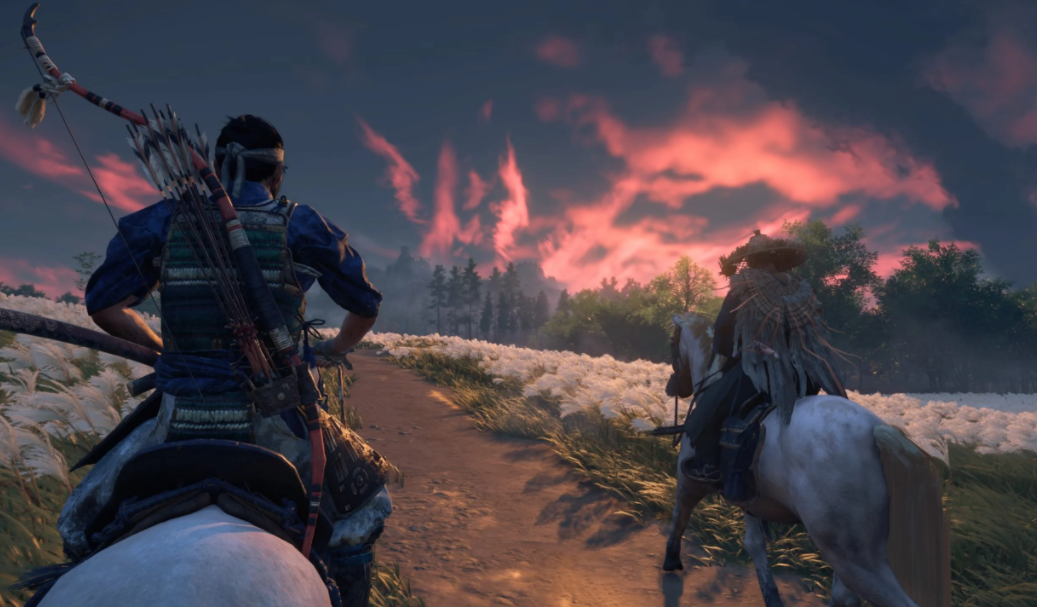 Jin has more than his trusty katana at his side though, as players will gradually earn side arms that can assist any situation, whether it’s direct, or from the shadows. These ranges anywhere from Kunai throwing blades, to a smokescreen that can be used for evasion or assault, these offensive accessories compliment your swords well, and will often be the difference in a life or death run-in with the Mongol army. The last weapon line at your disposal are your bows, and while they’re useful for scouting enemy camps from a safe distance, they’re nowhere near as intuitive as your main weaponry, as the aiming alias for either bow overcompensates a little too much of arc for your aimed shots, even when the draw is pulled back at maximum yoke. Luckily, this issue only persists with the initial stats on your Bow equipment and will eventually become a distant memory of annoyance with every improvement you graft on them (more on that in a moment.) The biggest issue with GoT’s combat is the flippant camera angles that players will have to correct in real-time as the melee system is executed through a free-flow system that doesn’t use any sort of lock-on feature, just an ever-so-subtle gravitation to the nearest goon facing Jin in battle. It is a bit clunky at times, especially when you’re pinned against any sort of building or architecture, especially when it needs to render the current depth of field through a phased wall of the said building you’re pushed against, which is far clumsier than this game’s production pedigree warrants.
Jin has more than his trusty katana at his side though, as players will gradually earn side arms that can assist any situation, whether it’s direct, or from the shadows. These ranges anywhere from Kunai throwing blades, to a smokescreen that can be used for evasion or assault, these offensive accessories compliment your swords well, and will often be the difference in a life or death run-in with the Mongol army. The last weapon line at your disposal are your bows, and while they’re useful for scouting enemy camps from a safe distance, they’re nowhere near as intuitive as your main weaponry, as the aiming alias for either bow overcompensates a little too much of arc for your aimed shots, even when the draw is pulled back at maximum yoke. Luckily, this issue only persists with the initial stats on your Bow equipment and will eventually become a distant memory of annoyance with every improvement you graft on them (more on that in a moment.) The biggest issue with GoT’s combat is the flippant camera angles that players will have to correct in real-time as the melee system is executed through a free-flow system that doesn’t use any sort of lock-on feature, just an ever-so-subtle gravitation to the nearest goon facing Jin in battle. It is a bit clunky at times, especially when you’re pinned against any sort of building or architecture, especially when it needs to render the current depth of field through a phased wall of the said building you’re pushed against, which is far clumsier than this game’s production pedigree warrants.
Ultimately, the depth of the Swordplay does wonders for the combat, as each encounter feels just as fresh as the last. It’s relieving to see Ghost of Tsushima keeping up with the theme of player choice, as players will always have the freedom to subdue the action by stealthily slaying their foes one by one, or they can storm with swords’a-swingin’ until every last goon is dead—either approach makes good on the thrills the moment an enemy appears on the screen.
Where the level design and combat mechanics are the choice meats served in this full course meal of a game, the remaining activities to interact with on the island are the cold Green Beans congealing to the side of the plate.
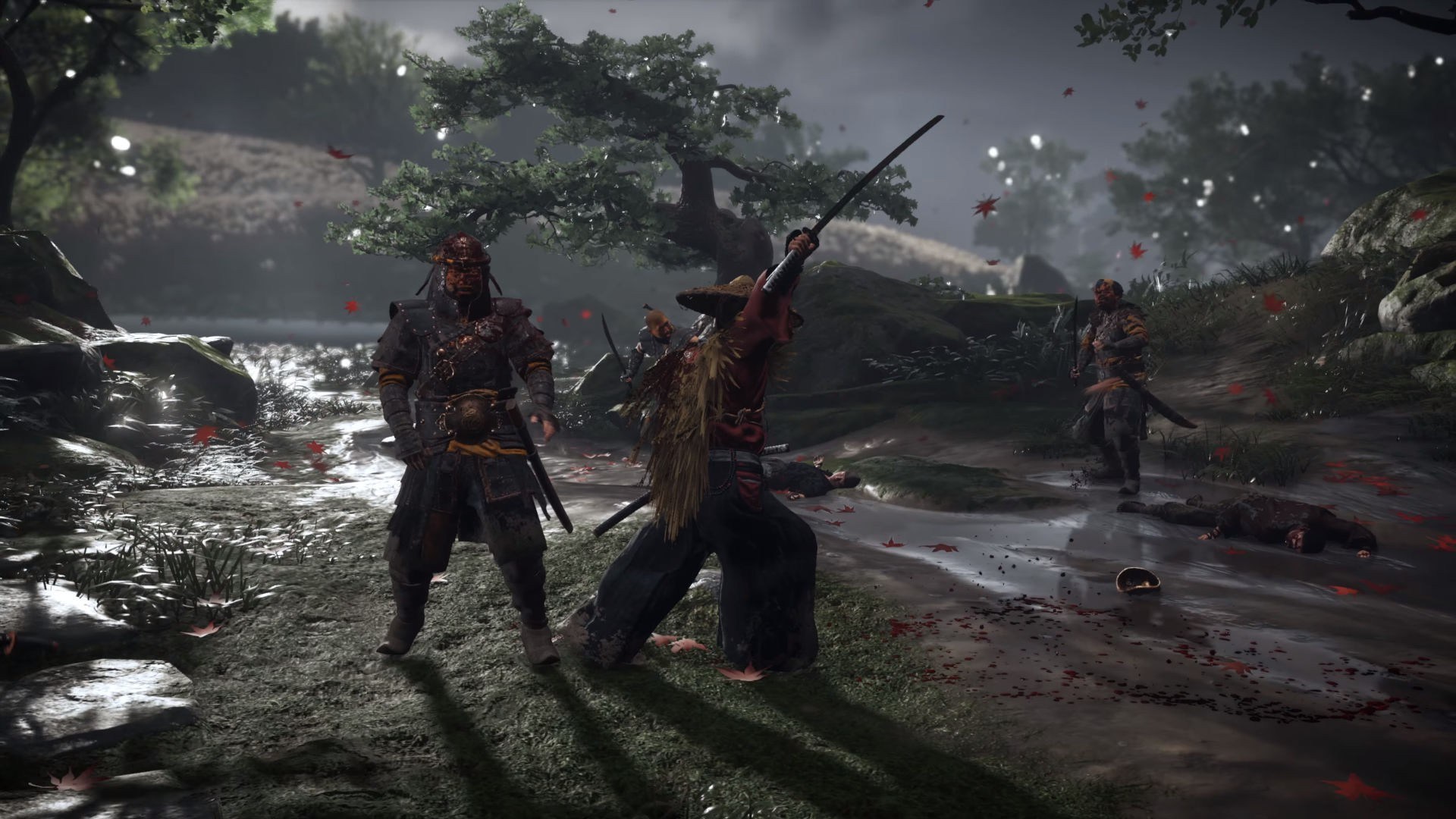
In addition to chasing off Mongol invaders through different parts of the island, Lord Sakai will also be able to find spots containing more relaxing quests to embark on; these include composing a Haiku, chasing down a friendly fox that will lead him to a holy shrine, or soaking in a Hot Spring to increase his maximum health. While some of these distractions can be fun, and do add a lot to the atmosphere of the game, a good third of these endeavors can slow down the pace of the game into a downright slog—specifically the Haikus—they’re just hokey garnish after the first five or so.
There’s a lot to argue against a studio taking on a project that’s so heavily influenced by a culture that none of them are internally native to, and to that effect, there are some irrefutable shortcomings that do hold Ghost of Tsushima back from being a PlayStation classic. These issues aside, however, the studio has easily developed one of the most solid action-adventure games to grace the aging Sony platform, with an excellent balance of player freedom and action that offers hours of enjoyment to squeeze out of the PS4 before its next-generation successor releases this Holiday season.
Don’t just take my word for it; Toshiro Nagoshi of Yakuza fame gave his official endorsement on the title as well—which means a lot from a Japanese developer of his pedigree. Be sure to grab it now while the summer release schedule is breezy free because boy oh BOY is this venture bigger than it lets itself on to be.
 Akira Kurosawa,
Akira Kurosawa,  Ghost of Tsushima,
Ghost of Tsushima,  Open World,
Open World,  PS4,
PS4,  PS4 Exclusive,
PS4 Exclusive,  Samurai,
Samurai,  Sucker Punch,
Sucker Punch,  action games | in
action games | in  QCF Reviews
QCF Reviews 









